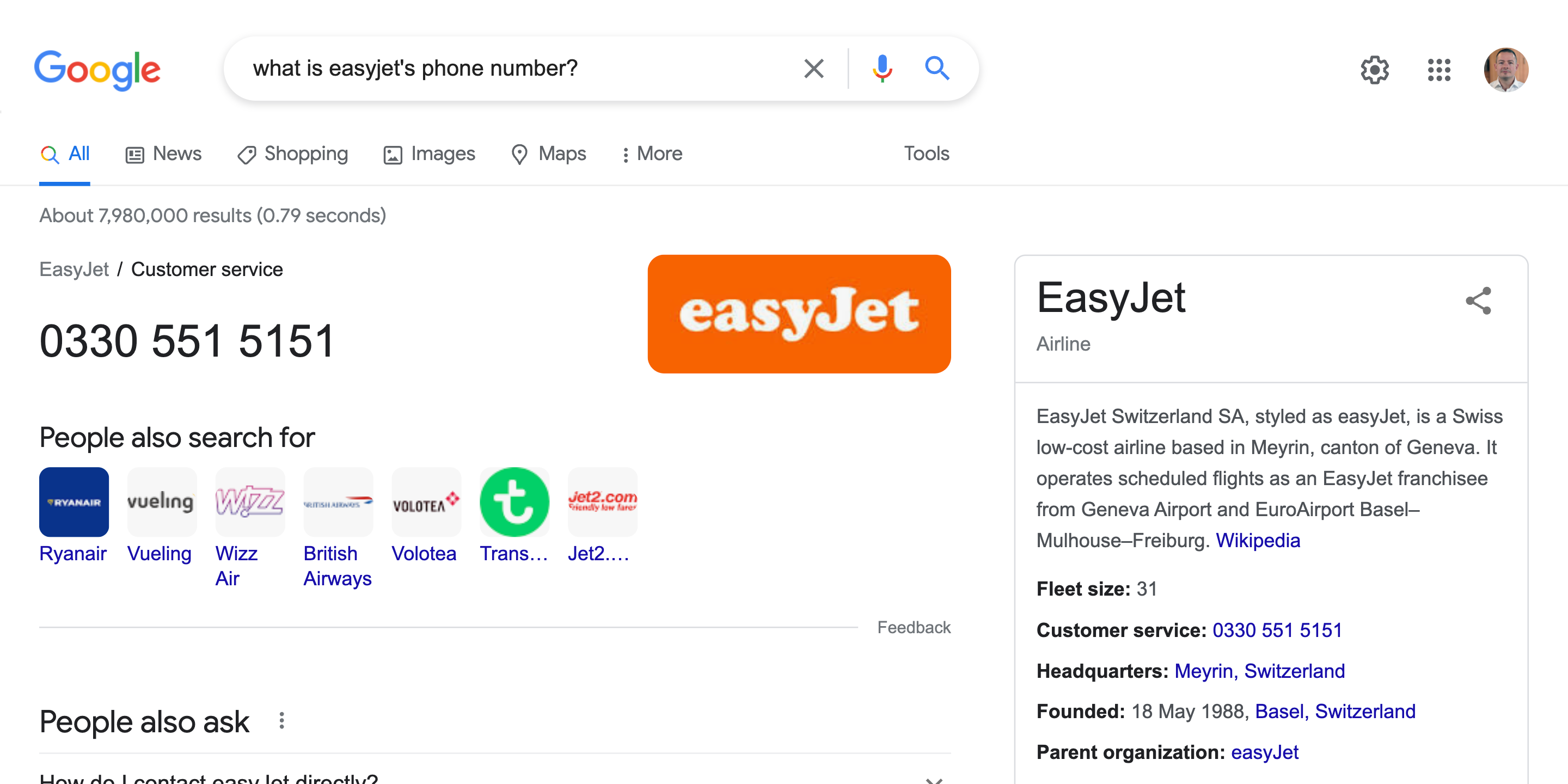Google first told the world about their Multitask Unified Model (MUM) artificial intelligence back in May 2021 but it’s not their first foray into A.I. powered semantic search. In October 2019 Google announced that they were starting to use Natural Language Processing (NLP) to improve the accuracy of their search results. But what exactly is semantic search and how does it affect you in late 2022?
TL;DR
Increasingly, Google will be using web content to generate it’s own answers to queries instead of referring visitors to the content itself. Webmasters should expect to see a significant deterioration in organic search traffic. They will no longer be able to entice visitors with content, then target them with ancillary content, CTA’s etc.
The basics
NLP powered semantic search enables Google to understand the semantic meaning behind phrases: phrases within content and search queries themselves. It’s a vast improvement over traditional keyword search. Let’s take a trivial example:
Imagine someone searches for “I want to buy a car”. One blog post is titled “I want to buy a car” and another has the title “I want to sell my car” - which post is most suitable? the second, obviously - but in simple keyword terms, the first is a much closer match.
Semantic search understands that a buyer and seller are two sides of the same coin. Someone looking to buy a car actually needs to find a seller, not another buyer. This is a trivial example, but it’s surprising how often keyword based searching falls short. In most question/answer or problem/solution type scenarios the keywords don’t actually align.
BERT
Google’s predecessor to MUM, BERT, allowed Google to understand the context in which words are used. The B in BERT stands for bi-directional. Put simply it means Google can understand context by looking at the words to the left and right of a given word.
T5
T5 is a successor to BERT, allowing Google to not only understand text, but also to generate it. Why would Google need to generate text? Translation. BERT was and is very powerful but it works only on English (mostly US English) documents. Being a global company, Google needs to support far more than English alone. Even within the US, the prevalence of Spanish means Google needs something other than BERT just for that market.
T5’s text generation capabilities allows Google to apply translations. In practical terms this means that Google is no longer restricted to English for semantic search queries. Note: They’re not actually translating the query results - it would make little sense to direct an english speaker to a german blog post. What they are doing is allowing their english language only A.I. to work with non-English documents and queries.
Multitask Unified Model (MUM)
MUM extends the text generation capabilities offered by T5 and this is where things get really interesting. MUM goes beyond text, also supporting images and videos. What does this mean? it means Google can look at an image of a pair of shoes and say “a pair a black walking boots”. MUM can also understand relationships between objects, understanding that walking boots are used for hiking and people like to hike in national parks.
Putting all this together allows Google to infer that if you’re going to a national park, these boots could be suitable.
Google plans to use MUM to actually generate content in response to to search queries. So instead of just displaying links to documents, rich snippets and other published material, Google will actually generate on the fly content, to answer the users question.
The example Google themselves give is finding information about Mount Fuji. Whilst the person Googling Mt Fuji could be an English speaker, the most authoritive content might be written in Japanese. Google will read the Japanese content, and use it for context to answer the question. The answer itself will be generated by Google, in English.
This is going to revolutionise search and it has huge implications for webmasters, authors, editors and SEO practitioners…
The implications
1. No more organic traffic
Ok that’s a bit of an exaggeration, but it will drop off..
Webmasters and SEO practitioners have never controlled how Google indexes and ranks content, but they did at least control the content itself. They could use CTA’s, apply A/B testing and other tools to optimise their content for the highest conversion rates. All this will change.
Remember, T5 and MUM are all about text generation. In the future, Google will not direct their users to your content, they’ll simply use it as a basis for answering the query. We can already see this in action today:

There’s no need for me to even visit Easyjet’s site. In terms of serving me, as a user it’s great. But Easyjet have lost the ability to tell me about new routes, sales or other promotional material. They can’t even get me to join their mailing list.
2. Think content, not presentation
A consequence of the move towards ad-hoc text generation is that authors, webmasters and SEO gurus no longer need to worry about presentation. A wordy document full of long paragraphs is off-putting for the reader, but hey - nobody will read it anyway. Bad news for content designers and landing page experts.
3. Embrace a truly global market
On the flip side, Google will helpfully generate multi-lingual content. If you’re site’s written in German only, no worries - Google will generate English languages answers to those who don’t speak German.
4. Forget keywords
This has been flagged up for some time, but keyword analysis is really a waste of time going forward. Remember the car buying example I cited earlier. If you’re trying to game the system by dropping in phrases such as “buy car” you’re wasting your time. In fact it will actually work against you - why would someone in need of a car want to hear from someone also buying a car.
5. Rich media suddenly becomes important
Google image search has been around for some time, and there are endless tutorials covering YouTube discovery and promotion. Yet text and image SEO has worked independently until now. Webmasters would focus on optimising their results for “regular” search along with image search/YouTube. The closest thing we’ve seen to a confluence, is the use of alt tags so Google’s regular search crawler could “see the image”.
I think it will be some time before Google really can treat an image in the same was as a fragment of text. There are two A.I. disciplines at work - Computer Vision (CV) and Natural Language Processing (NLP). The first, computer vision, is still quite limited, compared to the latter. Nevertheless, authors and SEO experts should start to think about using images and rich media to tell their story. Not just for the benefit of end users, but also as clues for Google.
Imagery is also a good way of mitigating the effects of my first point. Whilst A.I. powered image generation is becoming increasingly powerful, there’s no evidence Google plan to use it, at least not in the context of search. Whilst they extract and display Easyjet’s phone number, there’s no suggestion they are planning to generate images of a happy (or sad!) easyjet travellers.
Summary
Google is slowly moving away from traditional search, towards question answering/problem resolution. New development in both Computer Vision and Natural Language Processing (especially text generation) are a real threat to webmasters and SEO consultants.
In the future, expect Google to behave like a researcher - they won’t direct users to articles, they’ll read everything themselves, then summarise it or answer the question directly.
The implication is “lead magnets” will be no more. The days of writing a useful, thought provoking blog post (like this 😉), and using it as a tool to capture email addresses or signups will be over.
Contact me


